|
Getting your Trinity Audio player ready...
|
Reading Time 6 mins
June is here again. Mid-year. National Caribbean American Heritage Month gives the Caribbean its deserved center stage in the nation’s consciousness! So it is in geography as it is in history and current affairs; the Caribbean is middle America.
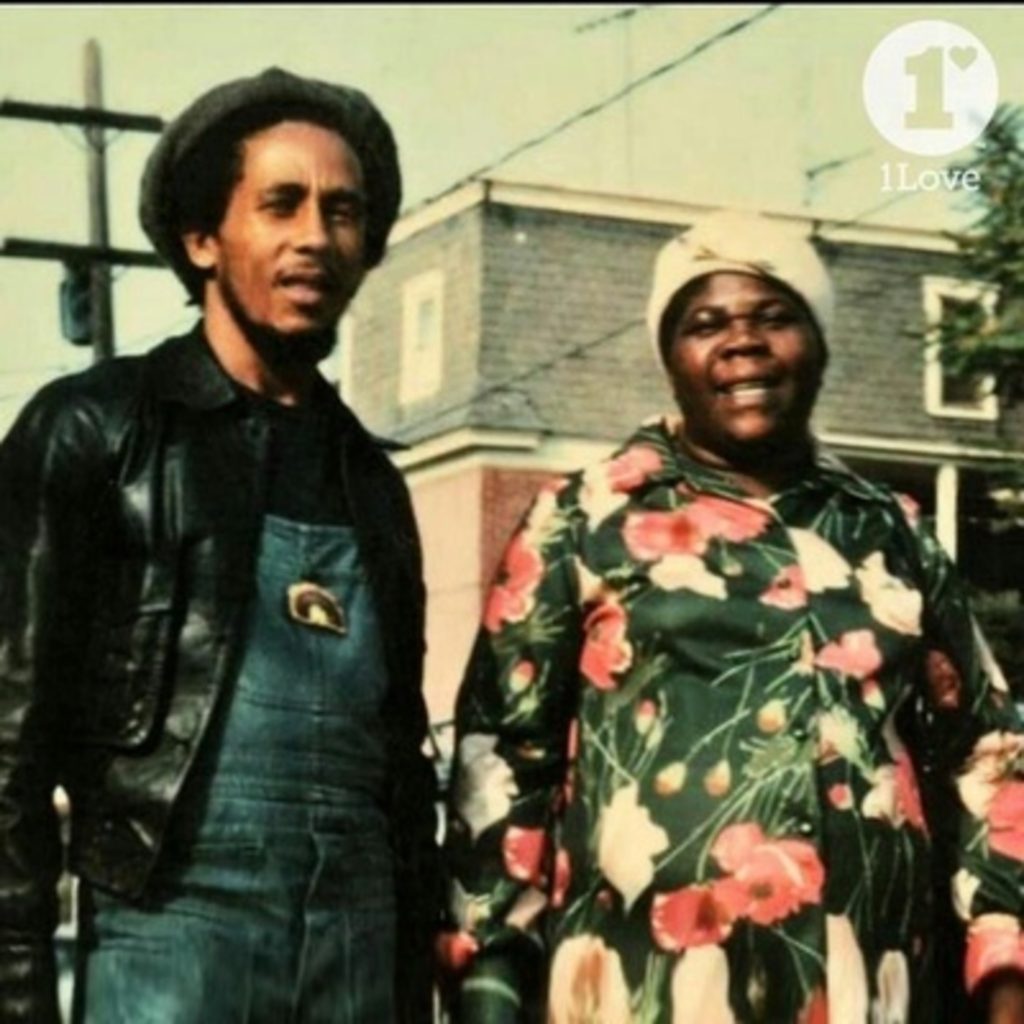
Bob Marley and his mother, Cedella Booker. Bob worked the “Night Shift” at Chrysler Corporation for a short period while living with his mom in Delaware, the USA, at various intervals between 1965 and 1977.
As it is annually, June 1 began month-long activities officially designated as National Caribbean American Heritage Month by Presidential Proclamation in the United States of America since 2006. The proclamation was enacted under the George Bush administration in recognition of the extraordinary contributions Caribbean Americans have historically made to the development of the United States.
Millions of people in the United States are connected to families across the Caribbean archipelago. The US and the Caribbean have a long connected history. The primary source of growth of the US black population, people from the Caribbean, are some of the earliest voluntary migrants to the United States and the largest source of its Black immigrant groups. The region and its people have, therefore, always been a significant cultural influence on the US. Likewise, American cultural, economic, and political impact on the Caribbean has deep and enduring roots. And, Caribbean migrants have made extraordinary contributions to the United States, from its beginnings and over the centuries.
“Our Shared History, Our Shared Future” is appropriately the theme for this year’s Caribbean Heritage Month. The event is being celebrated across the United States in recognition of the contribution of the Caribbean Peoples to the culture and economy of the nation. The June 2020 series of activities are organized by the Institute for Caribbean Studies (ICS), a Washington DC-based non-profit organization.
As facilitators of the Campaign to Celebrate June as National Caribbean American Heritage Month (NCAHM), ICS and its partners have convened the first all-virtual series of events that began on June 1st, with the opening celebrations with the US State Department and continues with Opening Celebrations in Boston, Atlanta, and New York.
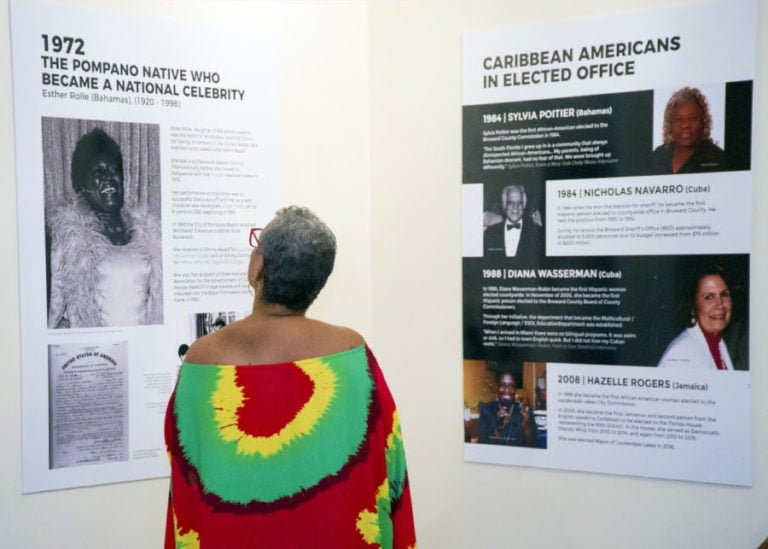
An attendee learning about South Florida’s Caribbean-American history at the 2019 art and history exhibition, Island Imprint | Photo: RJ Deed
Collectively, the Caribbean today consists of 40 million residents and 28 island nations, and it is comprised of some of the world’s most dynamic economies and most attractive destinations. Years of heavy migration from the Caribbean countries simultaneous with pervasive U.S. cultural domination in the region have created widespread expectations of settlement in the U.S., fostered extensive kinship, and cemented the ethnic and employer networks needed to make it happen. For millions, the United States residence is now an alternate homeland and seemingly a virtual entitlement. To a large extent, the United States is regarded as the primary ‘urban’ center for many Caribbean countries. Indeed, many Caribbean-based political parties campaign in the United States, hundreds of thousands of Dominicans vote in their presidential elections from the United States.
While long in the making, the on-set of capitalist globalization has intensified these developments. Historically transnational Caribbean Diaspora communities managed to stay connected using conventional means such as letter writing, phone calls, and telegrams. Today, twenty-first-century communications allow for real-time contact using sophisticated internet technology with the advent of web 2.0.
According to Internetworldstats, in 2019, there were approximately 42 million internet users in the Caribbean. Studies show an extraordinary 50% internet user penetration within the region and many countries in the upper 80 and 90% penetration. This includes 16 million Facebook subscribers across the region. In addition, Internet applications such as Google Meet, Facebook, WhatsApp, Twitter, Skype, cash apps, and YouTube have better enabled the potential of bridging the geographic distance for Caribbean immigrants in the US, allowing easier means of information sharing and cheaper communication and remittance streams.
According to BBVA Research, in the northern Caribbean, the primary recipient of remittances – Puerto Rico, Cuba, Dominican Republic, Haiti, and Jamaica – has more than one million migrants living in the United States. In the southern Caribbean, the main regions of origin of migrants are Trinidad and Tobago and Barbados. In addition, migrants represent over 60 percent of four Caribbean countries, Commonwealth of Dominica (97%), Saint Kitts Nevis (74%), Puerto Rico (61%), and Grenada (61%). In 2018, three countries, the Dominican Republic, Haiti, and Jamaica, constituted 97% of remittances to the Caribbean region. Overall, in the period in question, the area received 12.7 billion USD from its 8.2 million (documented) US-based emigrants.
Since the abolition of slavery in 1834, the Caribbean region has exported more of its people than any other region of the world. The fact that there are close to 50 Caribbean carnivals throughout North America attests to the extent and permanence of the Caribbean immigration experience.
U.S. political domination of the region, which includes scores of military invasions and interventions, created a destabilizing effect in many countries. This, coinciding with pervasive and long-standing U.S. cultural imperialism, has contributed to social instability and successive migration waves to the north. On the other hand, US political and media presence in the region has led to widespread Caribbean settlement expectations there, creating extensive kinship while accelerating push and pull migration factors. With a present population of about 40 million people, the Caribbean lost more than five million people in total to migration over the last 50 years.
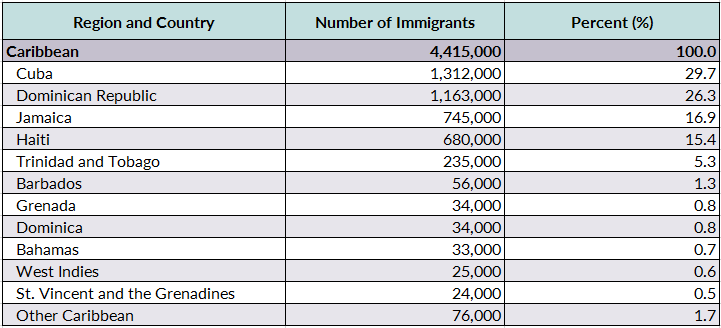
Source: Migration Policy Institute (MPI) tabulation of data from the U.S. Census Bureau 2017 American Community Survey (ACS).
Using the narrowest definition of the region, estimates of the Caribbean population in the U.S. is approximately 4.4 million (2017), accounting for 10 percent of the nation’s 44.5 million immigrants. According to US Census data, most of these immigrants live in Florida (41 percent) and New York (26 percent). Miami-Dade County in Florida was home to 862,000 Caribbean immigrants, the highest among all U.S. counties. Significant but smaller numbers reside in New York’s Kings County (291,000) and Bronx County (277,000).
Data from the Center for Immigration Studies (CIS) published by News America has Jamaica at the top of the list of homeownership among immigrants from Latin America and the Caribbean. The same study ranks Cuba number 2 and Haiti number 6 among this group of countries. And according to the Migration Policy Institute, in 2017, households headed by a Caribbean immigrant had a median income of $47,000 (lower than US-born and all immigrants combined). Approximately 17 percent of Caribbean immigrants lived in poverty, a rate higher than the native-born Americans (13 percent) and for immigrants overall (15 percent).
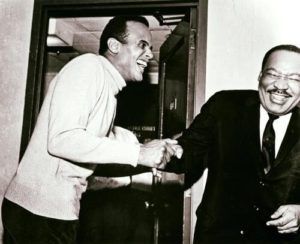 Some notable Caribbean American history makers range from Louise Helen Langdon Little, Garveyite, mother of Malcolm X (Grenada); sociologist, socialist, historian, Dr. WEB Dubois (Haiti/Bahamas heritage); Trinidad and Tobago-born U.S. Congressman Mervyn Malcolm Dymally; artist/designer Oscar De La Renta (Dominican Republic); Bajan-American Shirley Anita Chisholm (politician, educator, and author); writer, Hall of Fame basketballer Kareem Abdul-Jabbar (Carriacou/Trinidad and Tobago heritage); Marcus Garvey (Jamaica); Neil deGrasse Tyson, Astrophysicist, Cosmologist, Author (Puerto Rican & St. Kitts & Nevis descent); Activist and communist leader Claudia Jones (Trinidad and Tobago); the Dominican Republic born pan-Africanist/Garveyite Carlos A. Cooks; Edwidge Danticat, writer (Haitian heritage); Puerto Rican-born bibliophile Arturo Alfonso Schomburg; writer Jamaica Kincaid (Antigua/Dominica); Congresswoman Stacey Plaskett (Saint-Croix); Nevis-born founding father Benjamin Franklin; Haitian-born filmmaker Raoul Peck; first African American ship commander (WWII) Hugh N. Mulzac (Union Island, St. Vincent and the Grenadines); Civil Rights activist Stokely Standiford Churchill Carmichael aka Kwame Toure (Trinidad and Tobago); white house correspondence Yamiche Alcindor (Haitian heritage); Harry Belafonte (Jamaican/Martinique heritage); Rodney Leon, architect of African Burial Ground and ‘The Art of Return’ at the United Nations (Haitian heritage).
Some notable Caribbean American history makers range from Louise Helen Langdon Little, Garveyite, mother of Malcolm X (Grenada); sociologist, socialist, historian, Dr. WEB Dubois (Haiti/Bahamas heritage); Trinidad and Tobago-born U.S. Congressman Mervyn Malcolm Dymally; artist/designer Oscar De La Renta (Dominican Republic); Bajan-American Shirley Anita Chisholm (politician, educator, and author); writer, Hall of Fame basketballer Kareem Abdul-Jabbar (Carriacou/Trinidad and Tobago heritage); Marcus Garvey (Jamaica); Neil deGrasse Tyson, Astrophysicist, Cosmologist, Author (Puerto Rican & St. Kitts & Nevis descent); Activist and communist leader Claudia Jones (Trinidad and Tobago); the Dominican Republic born pan-Africanist/Garveyite Carlos A. Cooks; Edwidge Danticat, writer (Haitian heritage); Puerto Rican-born bibliophile Arturo Alfonso Schomburg; writer Jamaica Kincaid (Antigua/Dominica); Congresswoman Stacey Plaskett (Saint-Croix); Nevis-born founding father Benjamin Franklin; Haitian-born filmmaker Raoul Peck; first African American ship commander (WWII) Hugh N. Mulzac (Union Island, St. Vincent and the Grenadines); Civil Rights activist Stokely Standiford Churchill Carmichael aka Kwame Toure (Trinidad and Tobago); white house correspondence Yamiche Alcindor (Haitian heritage); Harry Belafonte (Jamaican/Martinique heritage); Rodney Leon, architect of African Burial Ground and ‘The Art of Return’ at the United Nations (Haitian heritage).
Prominent popular culture figures include hip hop founder DJ Kool Herc (Jamaica); Artist Jean-Michel Basquiat (Haiti/Puerto Rico); Lenny Kravitz (Dominican Republic); Rihanna (Barbados), Nicki Minaj (Trinidad and Tobago); hip hop artist Biggie Smalls (Jamaican heritage); Tito Puente (Puerto Rico), Gloria Estevan (Cuban heritage); Amanda Ingrid Seales, artist, comedian, television personality (Grenada), Jon Lucien (US Virgin Islands/British Virgin Islands).
Caribbean American History Month will culminate in Legislative Week, June 22-27, consisting of relevant discussions of major policy issues affecting the Caribbean American community and will involve members of the Congressional Caribbean Caucus. CAHM 2020 coincides with a moment when the COVID 19 pandemic heavily impacts the Caribbean American and general African American communities and, at the same time, heavily distressing Caribbean countries’ economies. Most of these island mini and microstates are experiencing economic shocks because of heavy dependence on tourism, extraordinary indebtedness, a stark trade imbalance with the US, and the resulting food insecurity.
The nationwide protests in the USA in response to systemic racism and its expression in police brutality and other anti-black human rights violations in the USA converge with growing demands in the Caribbean for reparations from a legacy of slavery. It is a history shared with Americans of African descent. Caribbean social movements and governments, through the Caricom 10 point agenda for reparatory justice, and in the United States through the efforts around H.R. 40 (a congressional bill to establish a commission to study reparations), set a solid basis for deepening the historical ties that continue to cement relations between the US and Caribbean peoples at home and abroad.
For further reading, see Debbie Jacob’s, Making Waves: How the West Indies Shaped the United States.
For the full calendar of Caribbean American Month, 2021 activities, visit: www.celebratejune.org
TAGS: #Caribbean #Caribbean American #Caribbean American Heritage #reparations #blackhistory #blacklivesmatter #blackpower #socialjustice #thisisamerikkka #slavery #systematicoppression #racialjustice #justice #CAHM 2021
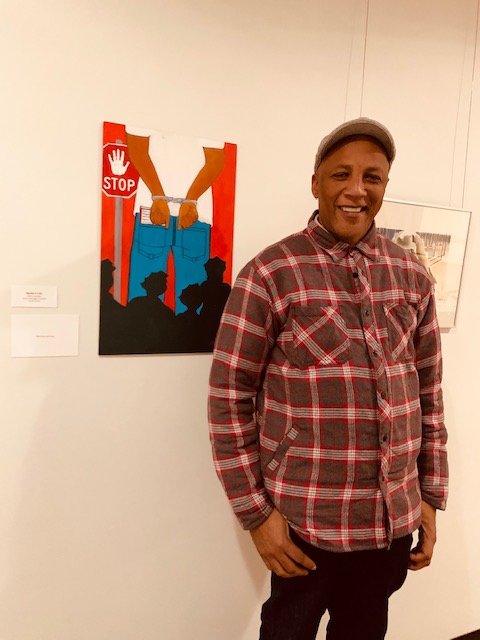
Martin P. Felix is co-editor of Big Drum Nation. A visual artist and educator, he lives with his family in New York City.

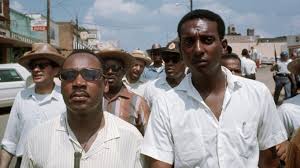
Thank you for covering Caribbean American Heritage Month this 2020. Many more to come.